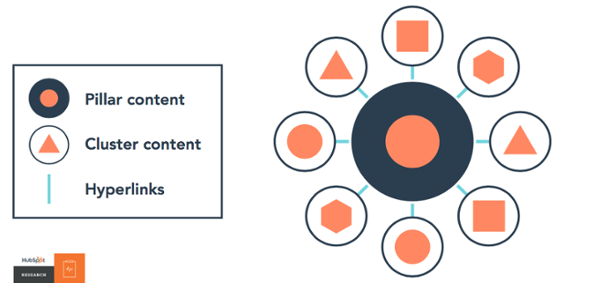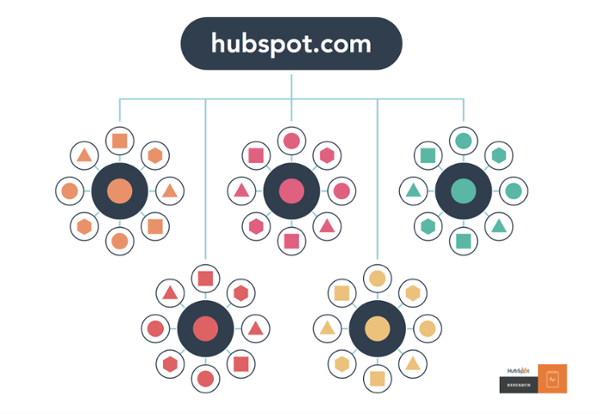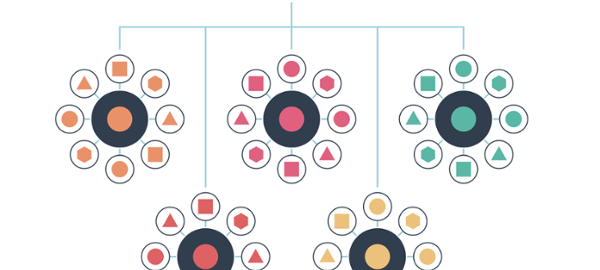— July 9, 2018
If there’s anything we can rely on when it comes to digital marketing, it’s that things are always changing and improving when it comes to creating better online visibility. It seems like just (July 15, 2018) that keywords were the stars of content planning and SEO writing to help people find a business on the Internet.
Well, ready or not, the new phase of content creation has arrived with pillar pages, topic clusters and sub topics. It’s time to set keywords aside to create in the next generation of SEO. This new model of pillars, clusters and sub topics is much more effective because it is topic-based instead of keyword-based and sends readers into a deeper dive of a site’s content.
Why does content creation have to change now?
Like so many things in our lives, we have Google to thank for one more—the topic-based search format. And we can own some of change to the new search tactic, too, because people have become more sophisticated in how they do online searches. We used to search for words, but now we’ve evolved to searching for phrases. In the past, we may have looked for a term such as “park” while today we would be inclined to look for “a park near me that has bike paths and a swimming pool.”
And because of our new search style, search engine developers are forced to change algorithms to keep up with search behavior. Specifically the 2015 RankBrain update at Google was the start of it all. RankBrain takes SEO to an entirely different place because it utilizes artificial intelligence and machine learning to interpret a searcher’s true intent based on location, prior behavior and query words.
Basically, Google “sees” what a searcher is looking for based on the search context terms so it behooves marketers to assist Google and other search engines see them by writing to the topic context format.
Sorting out pillars, clusters and sub topics
With the new search algorithms today, having one or two blogs on a subject probably won’t be robust enough to be found online. New strategies include the creation of pillar pages, topic clusters and sub topics which each serve a valuable purpose. Let’s take a look at how these three elements work together.
Pillar pages essentially form the overview topic to be covered. Pillar pages should answer the main questions that your site visitors will have about your business. Think of them as the strong foundation for your site as pillars would be for an architectural plan.
These will be the structural guiding pages to be created for your site from which the other pages will refer. This is where the in-depth content will live. It is high level, usually at a top position in your site’s hierarchy so that other sub topic pages can link to it and provide more supporting detail.

Topic clusters are the pages that link to the pillar pages and can take the form of any type of content—blogs, videos, etc. They provide the detail using the SEO terms you have identified for your site. This method of organizing your website gives you more control over search engine activity because it basically lets Google and other search engines know that you have dedicated space to a particular topic and should be considered a reliable source for user searches.

As shown in this illustration, supporting pages link to the pillar pages, as well as the reverse. This moves content away from the silo structure where each piece of content was written for a keyword without much thought to interactions with other content.
When arranged in a topic cluster, each piece of content is stronger because it gets support from other related pages as well as provides support for similar topic pages on the site.
Sub topics work in the topic cluster format to provide the detail necessary to fully explain the topic. Because they are interlinked within the topic clusters format, searchers get a broader and deeper experience on your site and will be inclined to stay longer because you are providing answers that are easy to find.
Strengthen your content strategy today
Building a stronger content strategy will help bring more visitors to your site and will help it work smarter, not harder. It’s easy to accomplish once you start thinking in terms of topics instead of just single keywords.
This new type of SEO strategy will help you:
- Improve your site’s architecture
- Create a better user experience
- Make it easier for search engines to discover related content
- Boost search engine visibility
- Build trust and thought leadership
- Help sales reps qualify leads
Digital & Social Articles on Business 2 Community
(82)
Report Post





